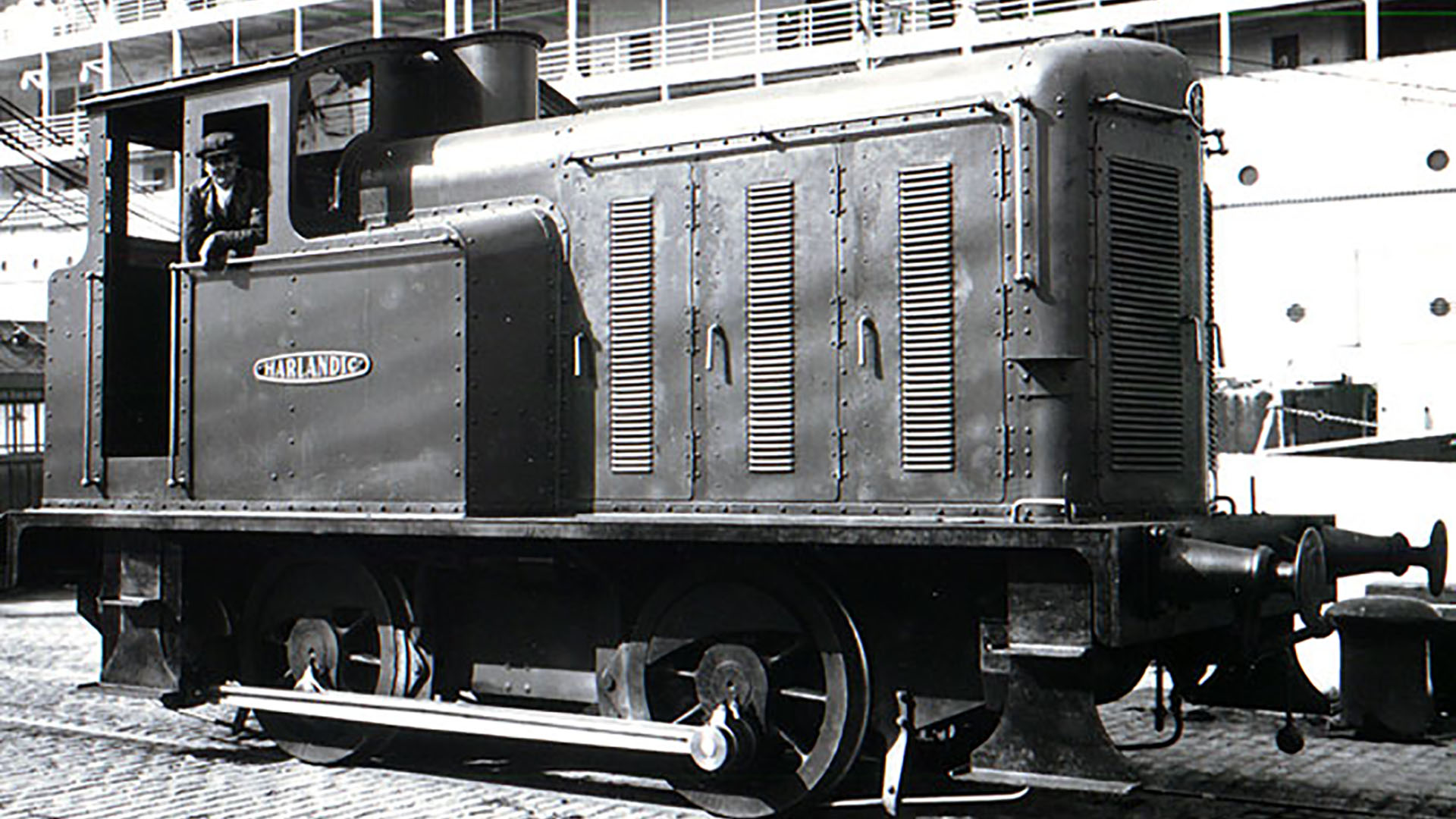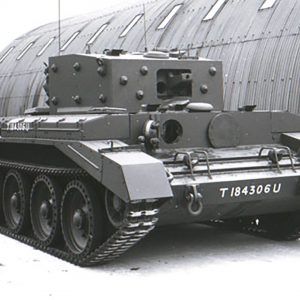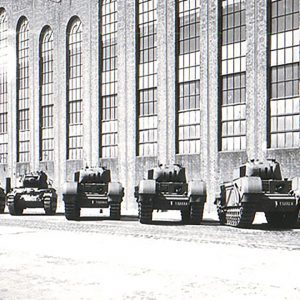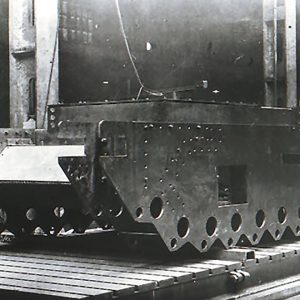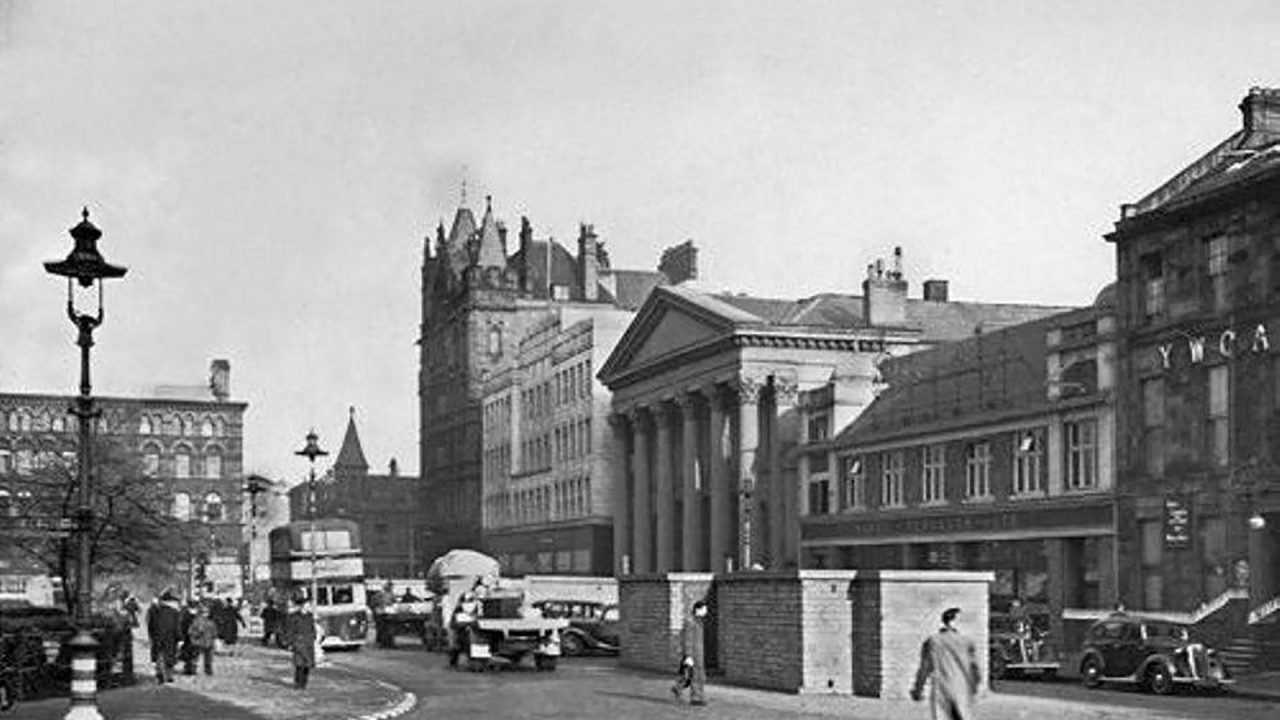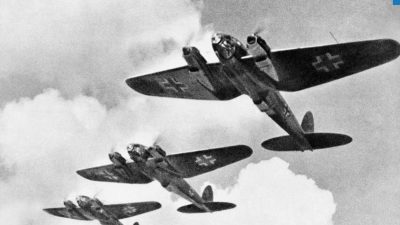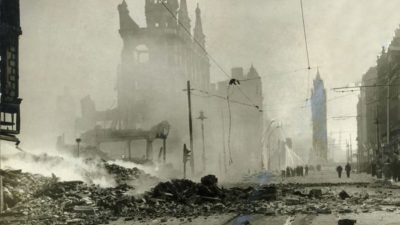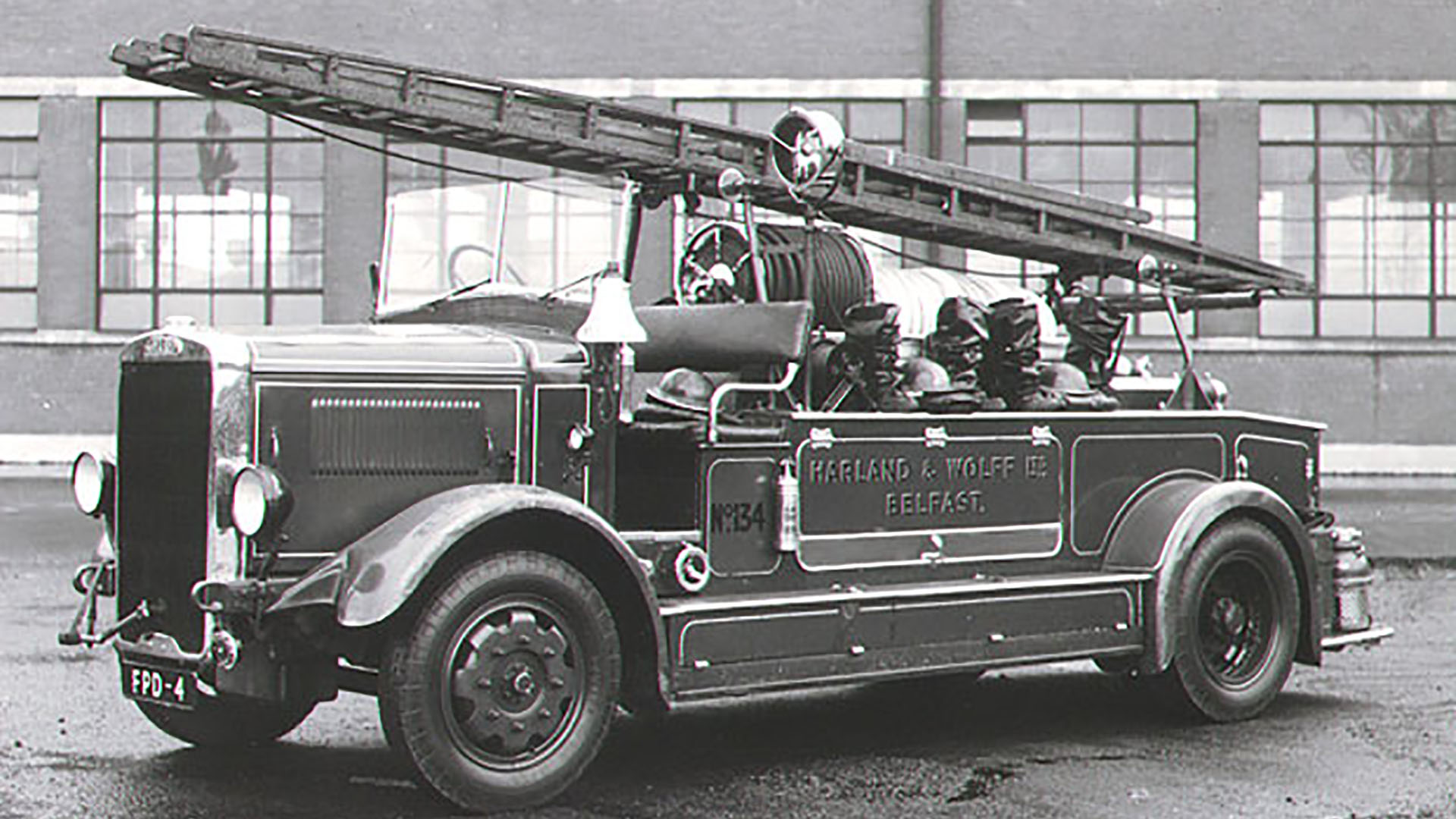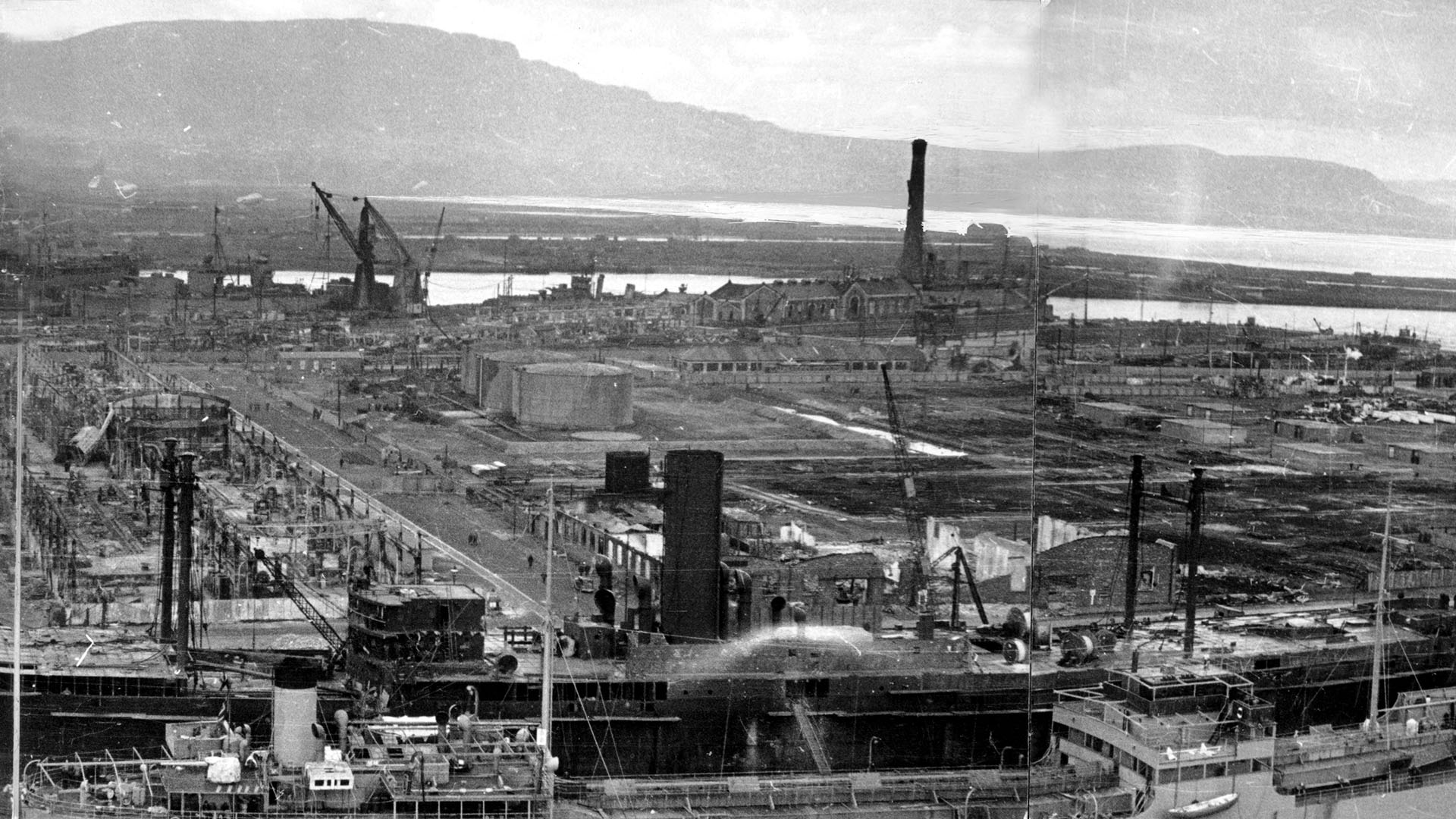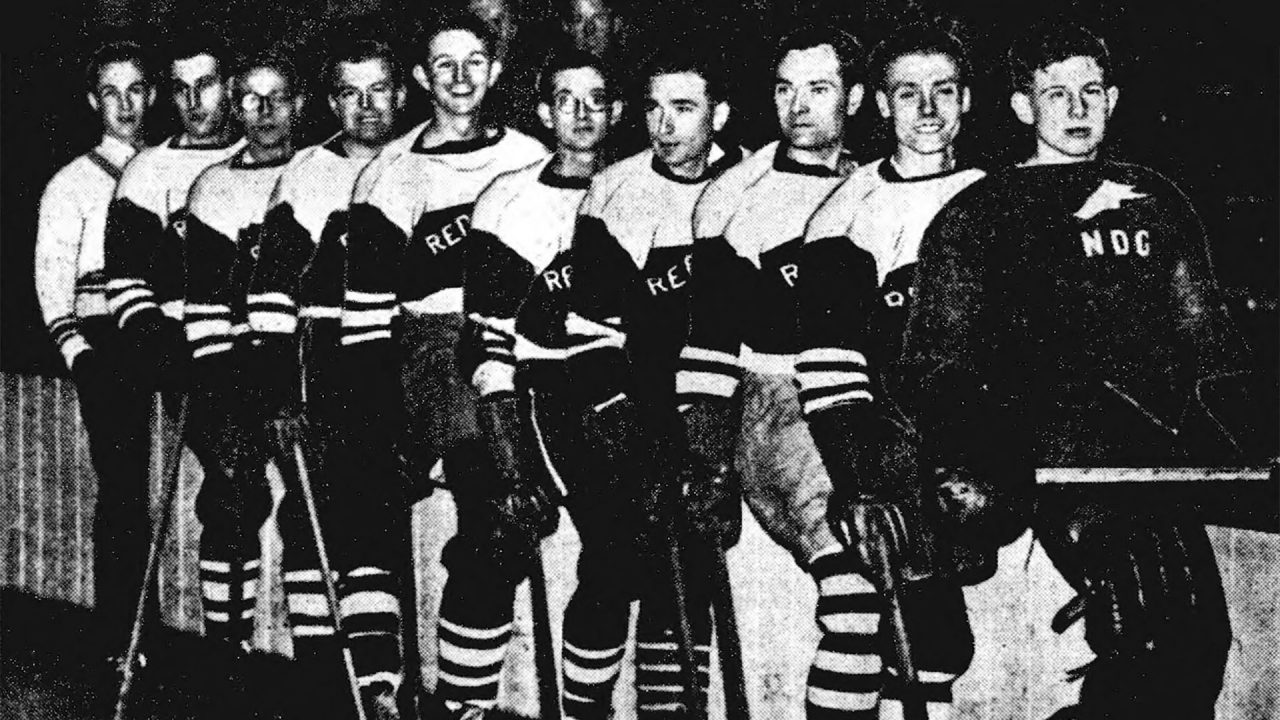Harland and Wolff Shipyard in Belfast was one of the largest shipbuilding yards in the world. There, Belfast yardmen built White Star Line ships like RMS Olympic and the infamous RMS Titanic.
Belfast has a long history of shipbuilding dating back to 1636 when clergymen constructed ‘The Eagle’s Wing’ to sail to America. In 1791, William Ritchie of Saltcoats, Ayrshire brought large-scale shipbuilding to the River Lagan. This paved the way for firms such as McIlwaine and Coll, Workman Clark, and Harland Wolff.
Edward Harland and Gustav Wilhelm Wolff founded their famous yard on 11th April 1861. They became profitable due to Wolff’s connections through his uncle Gustav Schwabe of Hamburg, Germany.
After the death of Edward Harland in 1895, William James Pirrie ran the company. During this time, they made vessels for the White Star Line including the infamous unsinkable Titanic. With political instability increasing in Belfast, Harland and Wolff purchased several other yards in Glasgow, Liverpool, and Southampton.
Planes and Trains
Before the outbreak of The Great War, over 25,000 men worked in the Belfast yards but this dropped to fewer than 3,000 by 1933. The outbreak of The Great War saw business boom for the Belfast-based shipyard. Times were not always good on Queen’s Island though and sectarian tension often led to the expulsion of Catholic workers.
An economic slump following the war coupled with a global recession in the 1920s brought an end to the Workman Clark yard. By 1931 at Harland and Wolff, there was an overdraft of £2.3 million. Employment fell to between 2,000 and 3,000. Over the course of the 1930s, the firm diversified and by 1934 employment reached 10,000. In 1935, they produced a world record of tonnage and 1938 saw more production than any other UK based yard. When Britain declared war on Germany on 3rd September 1939, Harland and Wolff was the only shipyard left in the city.
Before the outbreak of the Second World War, Harland and Wolff was a progressive company in another field. Along with Armstrong Whitworth in Northumberland, they pioneered work on diesel rail traction. History has all but forgotten these achievements. Harland and Wolff ran mainline diesel engines more than a decade before the London Midland and Scottish Railway No. 10000. It would take another 20 years for more well-known rail companies such as Brush Traction and English Electric to catch up.
Harland and Wolff’s aim in developing diesel locomotives was to broaden the yard’s market and to increase sales throughout the hungry 1930s. With the onset of war, attention switched to ship and tank building, aircraft manufacture, and the production of armaments. The Belfast company abandoned its railway initiative. Therefore, the output was just 8 complete locomotives in 5 years from 1933 to 1938.
They built diesel-electric trains for the Belfast and Co. Down Railway, locomotives for export to America and Australia, oil pipeline engines in The Middle East, and grain silos. They also produced steel structures for shops, theatres, and cinemas. By 1939, with war on the horizon, there were 18,000 workers although still relatively few Admiralty contracts. The United Kingdom government had reservations over Ulster’s productivity and how prone to strikes the workforce was.
In 1936, the threat of war already hung in the air over Europe. The rise of fascism across the continent lead to unease between nations. Against this background, Harland and Wolff began manufacturing aircraft with Short Brothers. The first Short and Harland order was from the Royal Air Force for 189 Handley Page Hereford Bombers. During the Second World War, this factory became synonymous with the Short Stirling Bomber. Throughout wartime, Short and Harland produced around 1,200 Short Stirling Bombers and 125 Short Sunderland Flying Boats. Short Stirling N6101 of the Royal Air Force’s No. 1651 Heavy Conversion Unit was one of the first to roll off the production line during wartime. In 1941, Harland and Wolff opened a repair base in Derry, which aided the Allies in the Battle of the Atlantic.
Second World War in the Shipyards
In the lead up to the Second World War, work in the Belfast shipyard intensified. Throughout the war, Harland and Wolff Shipyard began producing vessels at a rate not seen since The Great War or since the Golden Age of Victorian shipbuilding. As orders from the British Admiralty rolled in, employment rose again to over 20,000 men. Their output included gunboats, depot ships, monitors, cruisers, destroyers, aircraft carriers, patrol boats, trawlers, minesweepers, corvettes, tankers, and assault ships. As well as boats, Harland and Wolff made tanks and guns in the early years of the Second World War. With such prolific output fuelling the war effort, surely the Belfast shipyard would make a prime target for Nazi bombs.
For the Royal Navy, they constructed aircraft carriers such as HMS Formidable and HMS Unicorn. They also built around 110 other vessels including the cruiser HMS Belfast that saw action during the war. During the Second World War, around 35,000 people worked in the Harland and Wolff yard. In the early years of the war, they carried out repairs to over 22,000 vessels. As well as building works, the employees of Harland and Wolff contributed to the war effort through fundraising such as contributions to the Belfast Telegraph Spitfire Fund.
The Tanks of East Belfast
In September 1939, a request was made to Harland and Wolff to design a large infantry tank. Their design was the A20, an early prototype for what would become the Churchill tank. The first design anticipated trench warfare but by the fall of France in 1940, it was clear this war would be different from the last.
Vauxhall Engineering Works enhanced the design into the A22, the Churchill. Harland and Wolff continued to manufacture the tanks until May 1943. As well as the Churchill, they produced Matildas and Centaurs, around 550 tanks in total. Tanks built in Northern Ireland saw effective use throughout Europe and North Africa.
During the Belfast Blitz, Harland and Wolff moved its tank production facilities to the Woodburn Road, Carrickfergus. Today, the Co. Antrim coastal town proudly displays one of the Harland and Wolff built Churchill tanks belonging to the North Irish Horse Regiment.
Photos copyright Harland and Wolff.
Harland and Wolff in the Belfast Blitz
Authorities noted Queen’s Island as a vulnerable point as early as 1929. Mandatory provision of air raid shelters for factory workers only came into practise in the harbour area of Belfast. Westminster stated this was not ample provision, however Stormont still worried about the costs to industry. By 1940, Short and Harland could shelter its entire workforce and Harland and Wolff had provision to shelter 16,000 workers. These shelters were important as these factories had many employees working late at night and early in the morning when Luftwaffe attacks were likely.
Despite these provisions, Belfast was not prepared for what was to come.
The Luftwaffe Attacks
Luftwaffe bombs fell on the Harland and Wolff Shipyard during the Belfast Blitz. The incendiary and high-explosive devices caused severe damage on 7th-8th April 1941 during The Docks Raid. A total of 13 people died in the Docks and Queen’s Island area on that night including several Firewatchers at the shipyard.
The yards came under attack again during The Easter Raid of 15th-16th April 1941. While undergoing repairs, 3 Royal Navy ships sustained further damage by Luftwaffe bombs. Cranes toppled as blasts decimated Queen’s Yard, a boiler factory, and a power station. After the Belfast Blitz, the workload at Harland Wolff intensified. They built 6 aircraft carriers, 2 cruisers, and 131 other ships for the Royal Navy.
In the years after the Second World War, attention moved to the skies and jet-powered airliners led to a decline in ocean liner trade. The following decades saw further sectarian trouble in the yard and a steady decline in the number of ships built. In recent years, Harland and Wolff Heavy Industries was an industrial company. They specialised in ship repair, conversion, and offshore construction.
Belfast’s shipyards remain a recognisable part of the city with the giant yellow Samson and Goliath cranes towering over the east of the city. In recent years, a thriving television and movie industry has begun to flourish in the shadow of the giants. The Norwegian ownership of Harland and Wolff Industries went into administration on 5th August 2019. On 1st October 2019, London-based energy firm InfraStrata announced their purchase of the yard, preserving jobs and future industry on the historic site.
This post was part of my Shipyard Stories: From the Blitz to the Beachheads talk at EastSide Visitor Centre.
Harland and Wolff's wartime ships
Construction of the vessels below took place in Belfast's most famous shipyard. They all saw action with the Royal Navy between 1st September 1939 and 2nd September 1945.
| Ship No. | Name | Type | Launch Date | Delivery Date | Tonnage |
|---|---|---|---|---|---|
| 482 | HMS Glorious | Light Battle Cruiser | 20th April 1916 | 31st December 1916 | 22354 |
| 485 | HMS M29 | Coastal Monitor | 22nd May 1915 | 20th June 1915 | |
| 487 | HMS M31 | Coastal Monitor | 24th June 1915 | 9th July 1915 | 360 |
| 489 | HMS M33 | Coastal Monitor | 22nd May 1915 | 26th June 1915 | 360 |
| 492 | HMS Erebus | Monitor | 19th June 1916 | 2nd September 1916 | 8022 |
| 493 | HMS Terror | Monitor | 18th May 1916 | 6th August 1916 | 8022 |
| 500 | HMS Vindictive | Seaplane Carrier | 17th January 1918 | 19th October 1918 | 7764 |
| 552 | HMS St Aubin | Tug | 27th June 1918 | 21st August 1918 | 468 |
| 563 | HMS St Mellons | Tug | 30th November 1918 | 30th December 1918 | 421 |
| 564 | HMS St Olaves | Tug | 27th December 1918 | 4th March 1919 | 468 |
| 940 | HMS Penelope | Arethusa - class cruiser | 15th October 1935 | 13th November 1936 | 5050 |
| 1000 | HMS Belfast | Southampton-class cruiser | 17th March 1938 | 3rd August 1939 | 10173 |
| 1007 | HMS Formidable | lllustrious-class aircraft carrier | 17th August 1939 | 24th November 1940 | 28094 |
| 1023 | HMS Adamant | Submarine depot ship | 30th November 1940 | 28th February 1942 | 12500 |
| 1031 | HMS Unicorn | Aircraft maintenance | 12th December 1939 | 9th March 1940 | 14750 |
| 1037 | HMS Elm | Tree-class trawler | 12th December 1939 | 9th March 1940 | 530 |
| 1038 | HMS Fir | Tree-class Trawler | 27th January 1940 | 30th April 1940 | 530 |
| 1039 | HMS Bangor | Bangor-class Minesweeper | 23rd May 1940 | 4th November 1940 | 656 |
| 1040 | HMS Blackpool | Bangor-class Minesweeper | 4th July 1940 | 7th February 1941 | 656 |
| 1041 | HMS Coreopsis | Flower-class corvette | 23rd May 1940 | 17th August 1940 | 925 |
| 1042 | HMS Crocus | Flower-class corvette | 26th June 1940 | 20th October 1940 | 925 |
| 1046 | HMS Black Ranger | Range-class Tanker | 22nd August 1940 | 27th January 1941 | 3417 |
| 1047 | HMS Blue Ranger | Range-class Tanker | 29th January 1941 | 6th June 1941 | 3417 |
| 1048 | HMS Brown Ranger | Range-class Tanker | 12th December 1940 | 11th April 1941 | 3417 |
| 1049 | HMS Black Prince | Dido-class Cruiser | 27th August 1942 | 20th November 1943 | 5950 |
| 1054 | HMS Rumba | Dance-class trawler | 31st July 1940 | 12th November 1940 | 530 |
| 1055 | HMS Sarabande | Dance-class trawler | 29th August 1940 | 2nd January 1941 | 530 |
| 1056 | HMS Spirea | Flower-class corvette | 31st October 1940 | 27th February 1941 | 724 |
| 1057 | HMS Starwort | Flower-class corvette | 12th February 1941 | 26th May 1941 | 724 |
| 1058 | HMS Arabis | Flower-class corvette | 14th February 1940 | 5th April 1940 | 724 |
| 1059 | HMS Periwinkle | Flower-class corvette | 24th February 1940 | 8th April 1940 | 724 |
| 1060 | HMS Clarkia | Flower-class corvette | 7th March 1940 | 22nd April 1940 | 724 |
| 1061 | HMS Calendula | Flower-class corvette | 21st March 1940 | 6th May 1940 | 724 |
| 1062 | HMS Hibiscus | Flower-class corvette | 6th April 1940 | 21st May 1940 | 724 |
| 1063 | HMS Heartsease | Flower-class corvette | 20th April 1940 | 4th June 1940 | 724 |
| 1064 | HMS Camelia | Flower-class corvette | 4th May 1940 | 18th June 1940 | 724 |
| 1065 | HMS Mallow | Flower-class corvette | 22nd May 1940 | 2nd July 1940 | 722 |
| 1066 | HMS Peony | Flower-class corvette | 4th June 1940 | 2nd August 1940 | 722 |
| 1067 | HMS Erica | Flower-class corvette | 18th June 1940 | 9th August 1940 | 722 |
| 1068 | HMS Gloxinia | Flower-class corvette | 2nd July 1940 | 22nd August 1940 | 722 |
| 1069 | HMS Picotee | Flower-class corvette | 19th July 1940 | 5th September 1940 | 724 |
| 1070 | HMS Gentian | Flower-class corvette | 6th August 1940 | 22nd September 1940 | 723 |
| 1071 | HMS Hyacinth | Flower-class corvette | 19th August 1940 | 3rd October 1940 | 723 |
| 1072 | HMS Rhododendron | Flower-class corvette | 2nd September 1940 | 18th October 1940 | 724 |
| 1073 | HMS Heather | Flower-class corvette | 17th September 1940 | 1st November 1940 | 724 |
| 1074 | HMS Freesia | Flower-class corvette | 3rd October 1940 | 19th November 1940 | 724 |
| 1075 | HMS Orchid | Flower-class corvette | 15th October 1940 | 29th November 1940 | 724 |
| 1076 | HMS Kingcup | Flower-class corvette | 31st October 1940 | 3rd January 1941 | 724 |
| 1077 | HMS Pimpernel | Flower-class corvette | 16th November 1940 | 9th January 1941 | 724 |
| 1084 | HMS Romeo | Shakespearian-class trawler | 20th March 1941 | 28th June 1941 | 545 |
| 1085 | HMS Rosalind | Shakespearian-class trawler | 3rd May 1941 | 20th October 1941 | 545 |
| 1086 | HMS Oxslip | Flower-class corvette | 28th August 1941 | 27th December 1941 | 724 |
| 1087 | HMS Pennywort | Flower-class corvette | 18th October 1941 | 5th March 1942 | 724 |
| 1091 | HMS Campania | Escort Aircraft carrier | 17th June 1943 | 7th March 1944 | 12450 |
| 1095 | HMS Abelia | Flower-class corvette | 28th November 1940 | 3rd February 1941 | 724 |
| 1096 | HMS Alisma | Flower-class corvette | 17th December 1940 | 13th February 1941 | 724 |
| 1097 | HMS Anchusa | Flower-class corvette | 15th January 1941 | 1st March 1941 | 808 |
| 1098 | HMS Armeria | Flower-class corvette | 16th January 1941 | 28th March 1941 | 808 |
| 1099 | HMS Aster | Flower-class corvette | 12th February 1941 | 11th April 1941 | 808 |
| 1100 | HMS Bergamot | Flower-class corvette | 15th February 1941 | 9th May 1941 | 808 |
| 1101 | HMS Vervian | Flower-class corvette | 12th March 1941 | 09th June 1941 | 808 |
| 1102 | HMS Bryony | Flower-class corvette | 15th March 1941 | 16th June 1942 | 808 |
| 1103 | HMS Buttercup | Flower-class corvette | 10th April 1941 | 24th April 1942 | 808 |
| 1105 | HMS Cowslip | Flower-class corvette | 28th May 1941 | 9th August 1941 | 811 |
| 1106 | HMS Eglantine | Flower-class corvette | 11th June 1941 | 27th August 1941 | 811 |
| 1107 | HMS Fritillary | Flower-class corvette | 22nd July 1941 | 31st October 1941 | 811 |
| 1108 | HMS Genista | Flower-class corvette | 24th July 1941 | 18th December 1941 | 811 |
| 1123 | HMS Stronsay | Isles-class Trawler | 4th March 1942 | 24th April 1942 | 545 |
| 1124 | HMS Switha | Isles-class Trawler | 3rd April 1942 | 15th June 1942 | 545 |
| 1132 | HMS Algerine | Algerian-class Minesweeper | 22nd December 1941 | 24th March 1942 | 1054 |
| 1133 | HMS Alarm | Algerian-class Minesweeper | 5th February 1942 | 16th May 1942 | 1054 |
| 1134 | HMS Albacor | Algerian-class Minesweeper | 2nd April 1943 | 16th June 1942 | 1054 |
| 1135 | HMS Acute | Algerian-class Minesweeper | 14th April 1943 | 30th July 1942 | 1054 |
| 1136 | HMS Cadmus | Algerian-class Minesweeper | 27th May 1943 | September 1942 | 1054 |
| 1137 | HMS Circe | Algerian-class Minesweeper | 27th June 1943 | 16th October 1942 | 1053 |
| 1138 | HMS Espiegle | Algerian-class Minesweeper | 12th August 1943 | December 1942 | 1053 |
| 1139 | HMS Fantome | Algerian-class Minesweeper | 22nd September 1943 | 22nd January 1943 | 1053 |
| 1140 | HMS Mutine | Algerian-class Minesweeper | 10th October 1943 | 26th February 1943 | 1053 |
| 1141 | HMS Onyx | Algerian-class Minesweeper | 27th October 1943 | 26th March 1943 | 1053 |
| 1142 | HMS Rattler | Algerian-class Minesweeper | 9th December 1943 | 22nd April 1943 | 1053 |
| 1143 | HMS Ready | Algerian-class Minesweeper | 11th January 1944 | 21st May 1943 | 1053 |
| 1144 | HMS Rinaldo | Algerian-class Minesweeper | 20th March 1944 | 18th June 1943 | 1053 |
| 1145 | HMS Rosario | Algerian-class Minesweeper | 3rd April 1944 | 9th July 1943 | 1053 |
| 1146 | HMS Spenaker | Algerian-class Minesweeper | 20th April 1944 | 20th August 1943 | 1053 |
| 1147 | HMS Vestal | Algerian-class Minesweeper | 19th June 1944 | September 1943 | 1053 |
| 1153 | HMS Thruster | Landing Ship Tank | 24th September 1943 | 14th March 1943 | 5593 |
| 1154 | HMS Bruiser | Landing Ship Tank | 24th October 1943 | 2nd April 1943 | 5596 |
| 1155 | HMS Boxer | Landing Ship Tank | 12th December 1942 | 1st May 1943 | 5596 |
| 1162 | HMS Kale | River-class corvette | 24th June 1942 | 4th December 1942 | 1370 |
| 1170 | HMS Tweed | River-class corvette | 24th November 1942 | 28th April 1943 | 1370 |
| 1172 | HMS Oxna | Isles-class Trawler | 26th January 1943 | 22nd May 1943 | 545 |
| 1185 | HMS Helmsdale | River-class corvette | 5th June 1943 | 15th October 1943 | 1370 |
| 1186 | HMS Meon | River-class corvette | 4th August 1943 | 31st December 1943 | 1460 |
| 1191 | HMS Glory | Colossus class | 27th November 1943 | 2nd April 1945 | 13190 |
| 1201 | HMS Pickle | Algerian-class Minesweeper | 3rd August 1943 | 15th October 1943 | 1083 |
| 1202 | HMS Pincher | Algerian-class Minesweeper | 19th August 1943 | 12th November 1943 | 1084 |
| 1203 | HMS Plucky | Algerian-class Minesweeper | 29th September 1943 | 10th December 1943 | 1084 |
| 1204 | HMS Recruit | Algerian-class Minesweeper | 26th October 1943 | 14th January 1944 | 1084 |
| 1205 | HMS Rifleman | Algerian-class Minesweeper | 25th November 1943 | 11th February 1944 | 1084 |
| 1206 | HMS Squirrel | Algerian-class Minesweeper | 20th April 1944 | 16th August 1944 | 1084 |
| 1207 | HMS Chameleon | Algerian-class Minesweeper | 6th May 1944 | 14th September 1944 | 1084 |
| 1208 | HMS Cheerful | Algerian-class Minesweeper | 22nd May 1944 | 13th October 1944 | 1084 |
| 1209 | HMS Hare | Algerian-class Minesweeper | 20th June 1944 | 10th November 1944 | 1084 |
| 1210 | HMS Jewel | Algerian-class Minesweeper | 20th July 1944 | 9th December 1944 | 1084 |
| 1211 | HMS Liberty | Algerine-class minesweeper | 22nd August 1944 | 18th January 1945 | 1084 |
| 1226 | HMS Halladale | River-class corvette | 28th January 1944 | 11th May 1944 | 1370 |
| 1235 | HMS Humberstone | Castle-class corvette | 12th April 1944 | 20th September 1944 | 1100 |
| 1236 | HMS Oakham Castle | Castle-class corvette | 20th July 1944 | 10th December 1944 | 1100 |
| 1238 | HMS Oxford Castle | Castle-class corvette | 11th December 1943 | 10th March 1944 | 1100 |
| 1239 | HMS Pevesney Castle | Castle-class corvette | 11th January 1944 | 10th June 1944 | 1100 |
| 1246 | HMS Loch Craggie | Loch-class frigate | 23rd May 1944 | 15th June 1944 | 1435 |
| 1247 | HMS Loch Gorm | Loch-class frigate | 8th June 1944 | 7th July 1944 | 1435 |
| 1248 | HMS Loch Killisport | Loch-class frigate | 6th July 1944 | 9th September 1945 | 1435 |
| 1249 | HMS St Austell Bay | Bay-class frigate | 18th November 1944 | 29th May 1945 | 1600 |
| 1259 | HMS Widemouth Bay | Bay-class frigate | 19th October 1944 | 13th April 1945 | 1600 |
| 1261 | HMS Whitesand Bay | Bay-class frigate | 16th December 1944 | 30th July 1945 | 1600 |

